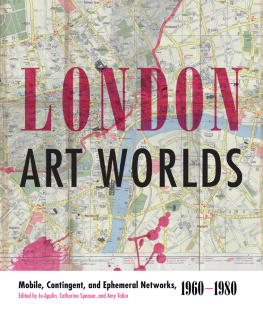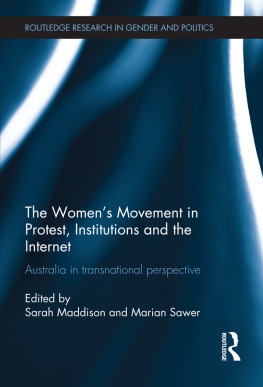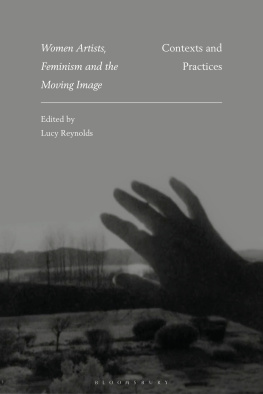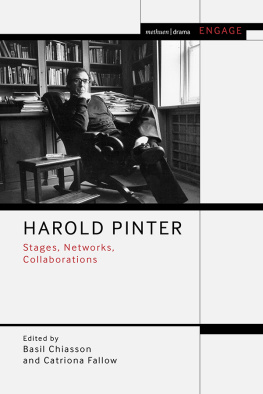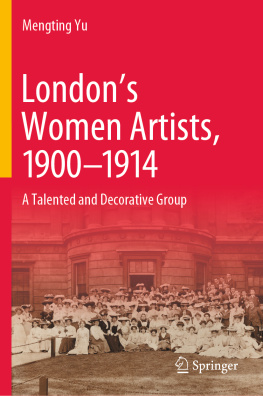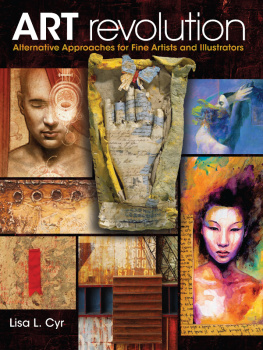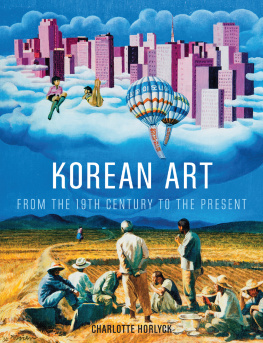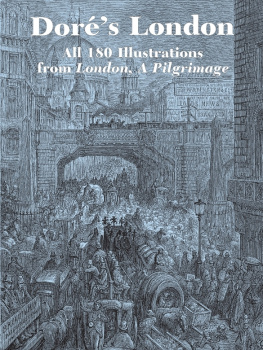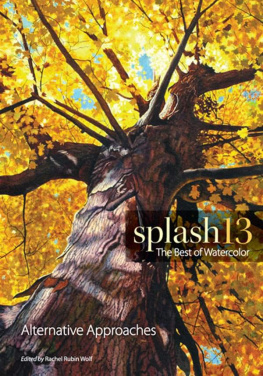London Art Worlds

Mobile, Contingent, and
Ephemeral Networks, 19601980
Edited by Jo Applin, Catherine Spencer, and Amy Tobin
The Pennsylvania State University Press, University Park, Pennsylvania

Supported by a Publications Grant from the Paul Mellon Centre for Studies in British Art.
Library of Congress Cataloging-in-Publication Data
Names: Applin, Jo, editor. | Spencer, Catherine, 1985 , editor. | Tobin, Amy, 1989 , editor.
Title: London art worlds : mobile, contingent, and ephemeral networks, 19601980 / edited by Jo Applin, Catherine Spencer, and Amy Tobin.
Other titles: Refiguring modernism.
Description: University Park, Pennsylvania : The Pennsylvania State University Press, [2018] | Series: Refiguring modernism | Includes bibliographical references and index.
Summary: Examines the rich networks of international artists and art practices that emerged in and around London during the 1960s and 1970s. Discusses diverse practices, movements, and spaces, from painting, sculpture, and film to performance, conceptual, and land artProvided by publisher.
Identifiers: LCCN 2017009261 | ISBN 9780271078533 (cloth : alk. paper)
Subjects: LCSH: ArtEnglandLondon. | Art, Modern20th century. | ArtistsEnglandLondon.
Classification: LCC N6770 .L6495 2018 | DDC 709.421dc23
LC record available at https://lccn.loc.gov/2017009261
Copyright 2018
The Pennsylvania State University
All rights reserved
Printed in China
Published by The Pennsylvania
State University Press,
University Park, PA 16802-1003
The Pennsylvania State University Press is a member of the Association of American University Presses.
It is the policy of The Pennsylvania State University Press to use acid-free paper Publications on uncoated stock satisfy the minimum requirements of American National Standard for Information SciencesPermanence of Paper for Printed Library Material, ANSI Z 39.481992.
Typeset by Regina Starace
Printed and bound by Asia Pacific Offset
Composed in Whitney and Futura
Printed on Chen Ming FSC matt
Bound in JHT
Contents
This book would not have been possible without the kind generosity of many individuals and organizations, for which we are very grateful indeed. The genesis of London Art Worlds: Mobile, Contingent, and Ephemeral Networks, 19601980 was a conference at the University of York in 2013 funded by the Paul Mellon Centre for Studies in British Art, together with support from the British Art Research School and the Centre for Modern Studies at the University of York.
In particular we thank James Boaden, Guy Brett, Genesis BREYER P-ORRIDGE, Sally Child, Andree Cooke and the Estate of Rose Finn-Kelcey, Rita Donagh, John Dugger, Felipe Ehrenberg, Jane England, Barbara Ess, Hilary Floe, the International Times Archive, the Leverhulme Trust, Roelof Louw, LUX, Nigel Mckernaghan, Mike Manzi at Adventure Pictures, Sally Potter, Annabel Nicolson, George Snow, Lisa Tickner, Sarah Victoria Turner, and the UCL Slade School of Fine Art.
We thank our contributors for their scholarship, intellectual rigor, and continuing enthusiasm for this project. Without their hard work and good cheer our editorial task would have been far less pleasurable. Thanks must go as well to our wonderful editors Ellie Goodman and Jonathan P. Eburne for their support and wise counsel. Many thanks also to Hannah Hebert for expertly shepherding the book into production. Siona Wilson and another anonymous reader provided invaluable feedback and advice for which we remain very grateful.
For many of the artists discussed in the following chapters, both London in particular and the United Kingdom in general were considered places of refuge and tolerance that could hold space for and give space to a diverse international group of political and creative voices. That very diversity is now being placed under increasing threat, as a politics of retrenchment continues to dominate the political landscape and the movement of people around the world. With its emphasis on the contingent and precarious, on the international networks of solidarity and relation that the sixties and seventies produced, and on the critiques of imperialism, patriarchy, racism, and neocolonialism mounted by many of the artists who appear in its pages, London Art Worlds feels especially prescient and politically pertinent.
In a 1970 article entitled
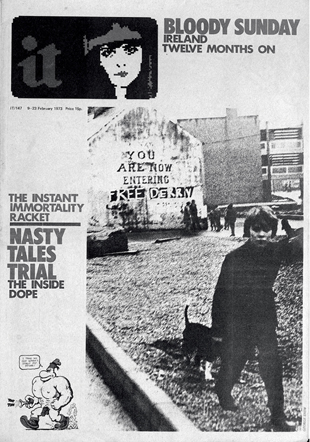
Front cover of the International Times, February 923, 1973. Cover design and photograph by George Snow.
The fluidity of references caught in the pages of the International Times expanded on the long front of culture, influentially identified by the critic Lawrence Botys semiabstract canvases, meanwhile, pair painterly shape and color with images of celebrity culture, fusing together one and the other without hierarchy or value judgment. Seen from this perspective, works by artists like Paolozzi and Boty are less about taking from the world outside than entering into a new, vital cultural stream of dialogue between art and its surrounding environment.
The practices uncovered by this book, however, are very different from the more familiar Pop works associated with the early 1960s. Indeed, the London art world of the 1960s has typically been considered either in terms of a hermetic history with its own internal currents and lineages or, conversely, as an art scene indebted to its international, and specifically American, peers, against
The 1960s and 1970s witnessed an explosion of new media, attitudes, and approaches to making and thinking about art, from the rise of cybernetics, through the establishment of alternative publications, to public protests and new pedagogical models in Londons art schools. Often these activities occurred outside of, or in tension with, established institutions and venues for art and its display. The London art world was no longer contained within the familiar galleries of Londons West End and major national institutions, nor was it tied to a specific medium or movement. Rather, new and constantly shifting networks and transient sites of collaboration, exhibition, and action emerged. Groups of international artists, many from Latin America and recently decolonized countries, mobilized politically in the capital around issues relating to gender, sexuality, feminism, and democracy. London Art Worlds traces the many informal, impromptu, and experimental relationships that exist alongside and fragment more established institutional histories of British art in this period. The chapters address the diversity of practices, movements, and spaces across the sixties and seventies, from painting, sculpture, and film through to performance and conceptual works. Feminism, activism, and the rising internationalism and politicization of the art scene are also foregrounded for their radical challenge and reformulation of the art world as it had previously been understood. Under these pressures, and as a result of a new emphasis on process, collaboration, and exchange, the art world was transformed into art worlds. This shift in terminology encompasses the interactions and participation of myriad artists, and the contingent artworks that circulated as a result, on national and international scales. We envisage this period as one of multiple and overlapping spheres, rather than a coherent system.

